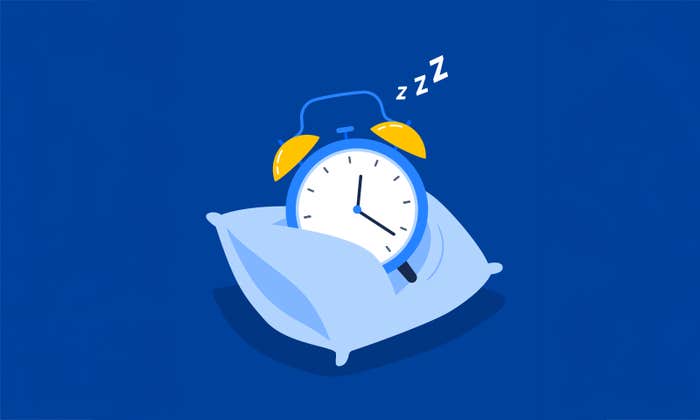In 2007, Patrick Savage, then a 52-year-old deputy chief of the New York City Fire Department, suffered cardiac arrest after a morning run on the treadmill. He had run triathlons every year since 1984, but a genetic predisposition for heart disease finally caught up with him. At Columbia University Medical Center, doctors performed cardiopulmonary resuscitation techniques, but Savage failed to rebound. Over six hours, Savage, whose face periodically turned purple, experienced seven consecutive cardiac arrests. At one point, Stephan Mayer, a neurointensivist at the Columbia hospital at the time, spoke to the deputy chief’s wife, Mary Grace Savage, a nurse who worked in his intensive care unit.
“He’s probably not going to make it,” Mayer said. Because Savage had been “pulseless”—his heart stopped beating for a cumulative total of about 90 minutes—he could have suffered brain death due to oxygen deprivation.
“I know that,” Mary answered.
Despite the grim prognosis, the doctors refused to give up. They placed Savage on a heart pump and a ventricular assist device to keep jumpstarting his heart. But they fretted about his brain. Neurons are the most high-energy cells in the body, so the brain can be the first organ to die when oxygen becomes scarce. The doctors knew Savage stood a slim chance, thanks to a revolutionary measure called therapeutic hypothermia, a resuscitation technique used on cardiac arrest patients who remain pulseless for too long. Patients are cooled to about 90 degrees Fahrenheit, which slows down the body’s metabolism and decelerates the process of brain death. The medical team placed sticky freezing pads all over Savage’s body and ran a heat exchange catheter through his femoral vein up into the vena cava—the large vein that carries blood to the heart. Through the catheter, they circulated chilled saline solution, which continuously drew heat out of his body.
Throughout history, medical breakthroughs have shown the body to be more resilient than previously imagined, granting physicians new windows of opportunity to save lives. Only 60 years ago, death was not seen as a process that could be interrupted, but as a moment in time: If your heart stopped, you were gone. Life-support machines, coupled with existing knowledge of CPR, changed that. In 1968, a Harvard Medical School committee outlined new expiry criteria: brain death. Today a person is legally dead if their whole brain, including their brain stem, has ceased to function, regardless of whether their heart is beating. Thanks to growing insights into cellular function, therapeutic hypothermia has entered the medical arena to revive brain function in those critical moments when “your heart has stopped beating, but your cells are still alive,” offers Mayer. It’s a complicated, biologically fraught period of time.
“They’re pulseless, they’re trying to die, and we’re trying to prevent them from dying.”
Normally, as glucose and oxygen enter the neurons, the mitochondria, the powerhouses of every cell, burn glucose like an engine burning gasoline. Each glucose molecule generates molecules of adenosine triphosphate, or ATP, the energy currency cells use for metabolism. But without oxygen and glucose, ATP can’t help pump sodium and calcium out of the cells, and the two elements build up inside the neurons. Under normal conditions, brain cells retain a slightly negative electrical charge, but the sodium build-up in cells and a massive calcium influx into the damaged neurons cause waves of electrical depolarization that sweep across the brain.
Neurons then start to release glutamate—a neurotransmitter normally present in the brain in small amounts—which in high levels causes extreme over-activation of cells. Glutamate quickly builds to toxic levels. This puts the neuron cells on the pathways for programmed cell death: Free radicals form, the tissues’ acidity increases, and peroxide starts to form, which burns holes in the lipid membranes of the cells. The protein scaffolding of the cytoskeleton, a network of fibers that help with cell structure, collapses; the cells leak out inflammatory mediators that signal an acute injury to other cells; and the blood-brain barrier starts to break down. Mayer, who today is the director of the Institute for Critical Care Medicine at the Icahn School of Medicine at Mount Sinai, likens the process to the sinking of the Titanic, with water surging faster and faster until the ship reaches a point of no return. “With a final massive influx of intracellular calcium, that’s the last nail in the coffin, and you’re done,” he says.
But even these highly sensitive brain cells don’t die instantly. Different cell populations in the brain have different thresholds of tolerance for the lack of oxygen and glucose. After an oxygen supply interruption of 10 or 15 minutes the brain can recover pretty much normally, though some neurons will die, which could cause some memory loss. Depending on how low the flow of oxygen is and how slowly the brain burns it, cells can remain alive for hours, as medics now understand. Cooling reduces the energy requirements needed to maintain cells’ integrity, which extends their lives. Paradoxically, the return of blood flow after a period without oxygen can also damage cells, so slowing down metabolic processes during recovery helps the brain to recuperate. “It’s like your brain is smoldering on fire and hypothermia is like throwing water on the fire,” Mayer says.
Now doctors at the University of Pittsburgh are taking therapeutic hypothermia to a literally new degree in humans. In a recently started clinical trial led by Samuel Tisherman, the director of the Surgical Intensive Care Unit at the University of Maryland, doctors are cooling off victims of violent trauma to about 55 degrees Fahrenheit. At that temperature, the human heart cannot beat. But, Tisherman explains, the potential benefit of the chill makes it a risk worth taking.

In the United States, nearly two-thirds of deaths in people under the age of 34 are due to injuries and violence. Victims of violent trauma bleed out in minutes—too quickly for surgeons to repair their wounds. Similar to cardiac arrest patients, their brains also suffer oxygen deprivation, but they have little blood left to pump. “In cases of sudden cardiac death, the heart is still full of blood, so you can keep it pumping through CPR and extend time,” explains Hasan Alam, head of general surgery at the University of Michigan. “But in bleeding situations you don’t have that.”
Instead, trauma patients are infused with chilled saltwater, the approach Alam helped pioneer in pigs. In this cutting edge Emergency Preservation and Resuscitation technique, or EPR, the surgeons place a catheter into the aorta going up to the patient’s head. The saline solution is pumped directly into their veins to rapidly cool first the brain and then the body. This lets doctors stop the clock and buy time until a patient’s bleeding can be controlled. At 55 degrees, the body uses as little as 4 percent of the amount of oxygen it would normally need, and is able to tolerate not having blood flow for a couple of hours. In Alam’s lab, the longest time that a pig remained temporarily dead, having bled out for 20 or 30 minutes, before being successfully revived, was three hours. The Pittsburgh team, however, doesn’t view their patients as dead, even temporarily. “We don’t really want to think of [these patients] as being dead,” Tisherman says. “They’re pulseless, they’re trying to die, and we’re trying to prevent them from dying.”
Once the wounds are repaired, the patients are rewarmed gradually—otherwise their blood pressure would fall and the intracranial pressure would spike, causing permanent death. Once patients are rewarmed to 90 degrees Fahrenheit, they are left at that temperature for up to 12 hours, so that their “smoldering” brains can revive slowly.
“The technology is evolving as we speak,” says Thomas Scalea, physician-in-chief at the University of Maryland’s Shock Trauma Center, which will soon be joining Pittsburgh in the clinical trial. The prototypes of the cooling cardiopulmonary bypass machines currently being developed at the center are the size of soda cans, and are “pretty slick,” he says. These machines give medics a greater window of opportunity to save lives. “It’s much, much longer than the four-minute barrier that we once thought we had,” says Lance Becker, the director of the Center for Resuscitation Science at the University of Pennsylvania. “As we learn more about the very nitty-gritty of the metabolism, we can come up with better and better ways of restarting a stopped brain and a stopped heart.”
Deputy Chief Savage was fortunate—both his brain and his heart successfully revived. About a week after he was rewarmed, a nurse practically fainted from shock when she saw him walking.
He has still not missed a triathlon.
Kira Peikoff, a journalist and novelist based in New York, has written for The New York Times, Slate, Salon, and other publications. She is the author of the thrillers Living Proof and No Time To Die. @KiraPeikoff


























